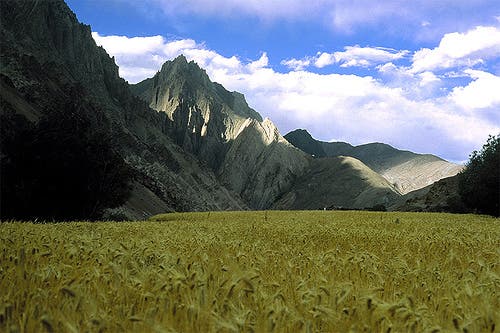We’ve become so accustomed to the imagery of huge stacks of solar panel arrays stretching across the scorching desert, that the idea of implementing solar panels in some of the coldest spots on Earth might be quickly judged as feeble. In reality, Japanese scientists claim in a recently published study that the most energy efficient geography to position solar panels in the world is in the Hymalayas, among others.
The explination lies in its altitude. At higher altitudes, sunlight exposure is great and in terms so is the potential for producing power from the sun, to the point that places like the Himalaya Mountains, the Andes and even Antarctica have been found to have a higher output than some desert areas.
Regarding the temperature difference, photovoltaic cells in use today actually function better at low temperatures, so here’s another bonus point. To see thing more practically, consider that the Himalayas, for example, could be 50 percent higher than output from the same module in Arizona.
There are, however, maybe an equal number of downturns to the geography’s advantages. Transmission losses and snowfal are the most evident, and there’s always the problem of deployment room. The plain desert is a lot easier to build an infrastructure onto than several miles high mountains. The potential of high, cold locations is attractive, nevertheless.
The study was published in the latest issue of U.S. journal Environmental Science & Technology.










